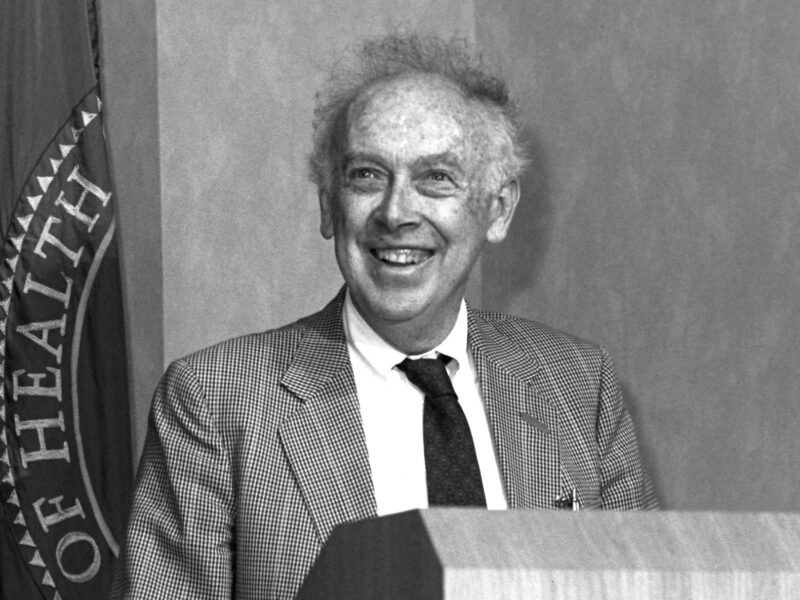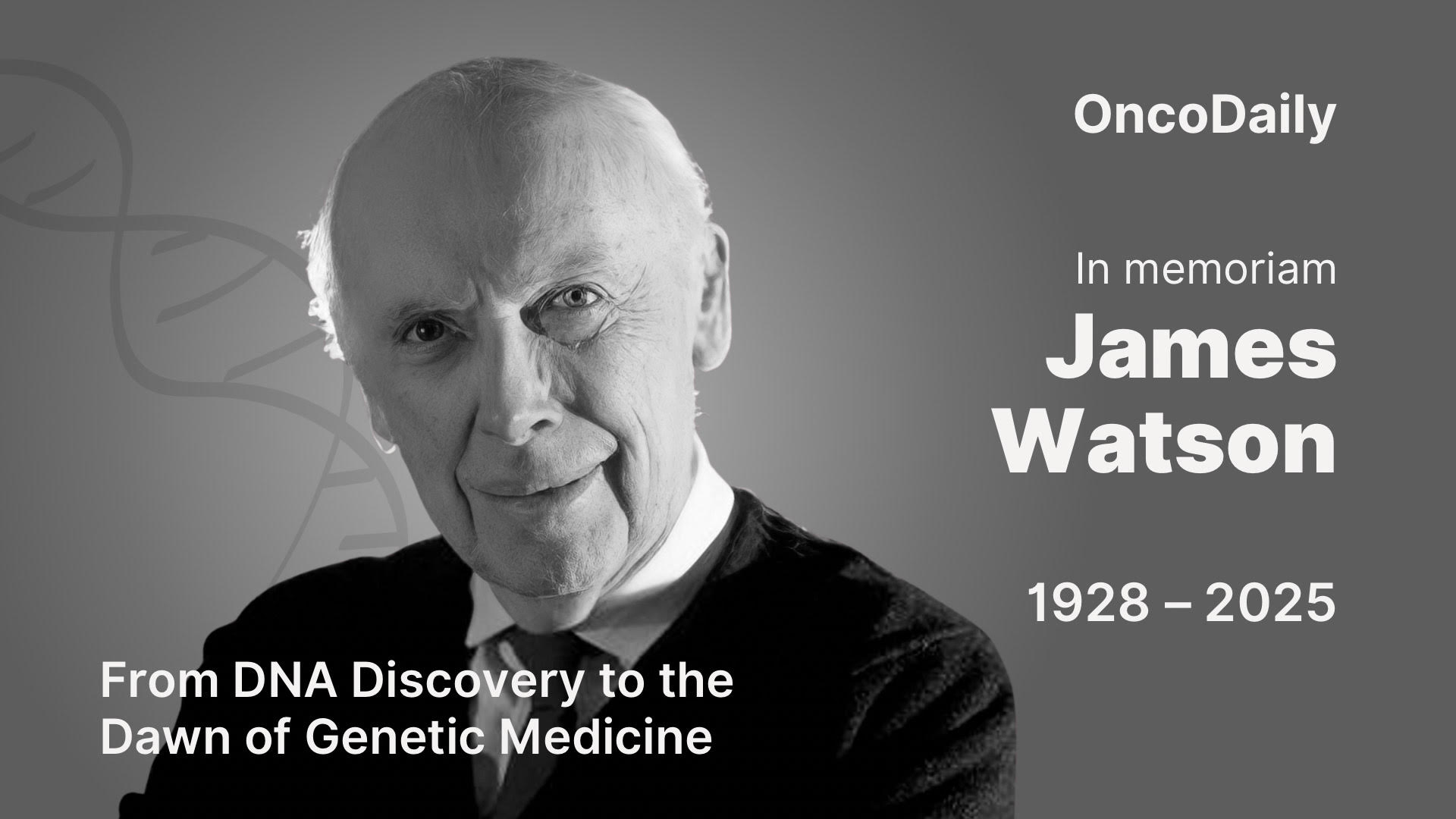James Watson was a pioneering molecular biologist best known for co-discovering the double helix structure of DNA in 1953, a breakthrough that revolutionized molecular biology and genetics. Born in 1928, his work laid the foundation for modern genetic medicine, influencing biotechnology, genomics, and disease treatment. Watson shared the 1962 Nobel Prize in Physiology or Medicine with Francis Crick and Maurice Wilkins for this seminal discovery. He later directed the Human Genome Project, which mapped the entire human genetic code.
Watson passed away on November 6, 2025, at the age of 97 after a brief illness, as confirmed by the Cold Spring Harbor Laboratory where he spent much of his career. His legacy is marked by monumental scientific achievements that changed the course of biology and medicine, although his later years were marred by controversial and widely criticized remarks which led to loss of honorary titles and some professional isolation.
Despite the controversies, Watson’s contribution to understanding the blueprint of life remains a transformative moment in science and medicine. The discovery of DNA’s double helix ushered in the era of genetic medicine, enabling advances from gene therapy to personalized medicine, fundamentally shaping how we approach human health today.

Early Life and Education of James Watson
James Dewey Watson was born on April 6, 1928, in Chicago, Illinois, to parents James Dewey Watson and Jean Mitchell Watson. He spent his childhood on the South Side of Chicago, where he attended Horace Mann Grammar School for eight years and South Shore High School for two years. Watson showed intellectual precocity from an early age; he was admitted to the University of Chicago at just 15 years old under a gifted youngster program.
Initially fascinated by bird-watching and natural history, Watson considered pursuing ornithology. However, his interests shifted toward molecular biology after he read Erwin Schrödinger’s influential book, What is Life? which proposed that genes held the secrets of life. This inspired his focus on genetics during his undergraduate studies.
At the University of Chicago, he excelled in biology and zoology, earning both PhB and BS degrees in 1947. He then moved to Indiana University for graduate studies under renowned scientists including Salvador Luria. Under Luria’s mentorship, Watson wrote his doctoral thesis on the effects of X-rays on bacteriophages, earning his PhD in zoology in 1950.
Watson’s early academic environment and mentorship nurtured his keen perception of biological complexity and prepared him to pursue the molecular structure of DNA, a quest that would revolutionize science. His time in Europe after his PhD, particularly at the Cavendish Laboratory in Cambridge, brought him together with Francis Crick, with whom he would famously discover the DNA double helix.
The Race to Discover DNA
James Watson moved to Cambridge University in 1951, where he met Francis Crick at the Cavendish Laboratory. Both shared a passionate interest in uncovering the molecular structure that housed genetic information. Their collaboration was intellectually dynamic, with Watson bringing fresh insights from the US and Crick offering strong theoretical and physical chemistry expertise.
A critical influence was the X-ray diffraction data produced by Rosalind Franklin and her colleague Raymond Gosling at King’s College London, famously known as “Photo 51.” Maurice Wilkins, also at King’s College, shared this crucial information and his own findings with Watson and Crick, fueling their model-building efforts. Franklin’s meticulous X-ray data provided key evidence for a helical structure, though she initially disputed some interpretations made by Watson and Crick.

Photo: Depositphotos
Between 1951 and 1953, Watson and Crick built various models, iteratively improving their understanding. They ultimately proposed the now-iconic double helix model with complementary base pairing, elegantly explaining how genetic information could be stored and replicated. Their landmark paper describing this structure was published in the journal Nature in April 1953, underlining the biological significance of the structure and its role in heredity.
This discovery was not only a scientific milestone but also triggered a revolution in molecular biology, genetics, and medicine. For this seminal work, Watson, Crick, and Wilkins received the 1962 Nobel Prize in Physiology or Medicine, marking their contributions as foundational to modern biological research
James Watson and the Impact of the DNA Discovery
The discovery of the DNA double helix by Watson and Crick revolutionized biology and genetics by revealing the molecular structure of the genetic material that carries hereditary information. Their model explained how DNA’s complementary base pairing allows for accurate replication and transfer of genetic information from one generation to the next. This breakthrough provided the foundation for understanding the genetic code and how genes direct protein synthesis.
Watson and Crick’s 1962 Nobel Prize in Physiology or Medicine, shared with Maurice Wilkins, recognized their profound contribution to science. Their work sparked decades of advancements including rapid gene sequencing, recombinant DNA technology, genetic engineering, and development of monoclonal antibodies. These innovations underpin modern biotechnology, personalized medicine, and genomic research.
Subsequent developments rooted in DNA knowledge led to the Human Genome Project, directed by Watson, which mapped the entire human genetic blueprint. These advances transformed disease diagnosis, treatment, and prevention, opening new frontiers in gene therapy, cancer biology, forensic science, and evolutionary biology. The discovery of DNA’s structure remains one of the most pivotal achievements in science, catalyzing ongoing breakthroughs in genetic medicine and biology.
Later Contributions and Controversies
After the Nobel Prize in 1962, James Watson made significant contributions to molecular biology, particularly in advancing understanding of gene expression and molecular genetics. He authored the influential textbook Molecular Biology of the Gene in 1965, which became a foundational text in the field and is still widely used. He also directed Cold Spring Harbor Laboratory from 1968, developing it into a leading research center for cancer, neurobiology, and genomics. His lab contributed to pioneering work on messenger RNA (mRNA) and gene regulation.
Watson’s 1968 memoir The Double Helix vividly recounted the discovery of DNA’s structure but ignited controversy for its candid depiction of colleagues and the perceived underappreciation of Rosalind Franklin’s critical contributions, fueling debates over scientific credit and ethics.
In later years, Watson faced widespread criticism for making racist and sexist remarks publicly, which tarnished his reputation and led to his stepping down from leadership roles and losing honorary titles. Despite these controversies, his scientific legacy as a co-discoverer of DNA’s structure and his early foundational work in molecular biology remain pivotal in the life sciences.
Legacy in Genetic Medicine
The discovery of DNA’s structure by Watson and Crick transformed medical science, opening the door to an era where the fundamental understanding of life’s blueprint enabled revolutionary advances. This breakthrough laid the foundation for genomics, the study of entire genomes, which has become central to biology and medicine.
Watson’s work paved the way for personalized medicine, where treatments can be tailored to an individual’s genetic makeup, drastically improving efficacy and reducing side effects. It also fueled the biotechnology revolution, enabling gene cloning, genetic engineering, and genome sequencing technologies that have revolutionized diagnostics, therapeutics, and vaccine development.
Key milestones influenced by the DNA discovery include the Human Genome Project, which mapped all human genes, and the advent of genetic testing for inherited diseases like cystic fibrosis and BRCA-related breast cancer. DNA technology now underpins cancer precision medicine, gene therapy for genetic disorders, and cutting-edge mRNA vaccine platforms such as those developed for COVID-19.
In essence, Watson and Crick’s work launched a molecular medicine revolution, reshaping healthcare into a more predictive, preventive, and personalized science, with ongoing impacts across oncology, infectious disease, neurology, and beyond.
You Can Also Read Epigenetic Modifiers in Cancer Therapy: Unlocking New Treatment Pathways by OncoDaily

OncoDaily Editorial Team Statement of Condolence and Respect
We at OncoDaily extend our deepest condolences to the scientific community and the family of Dr. James Dewey Watson, a pioneering molecular biologist whose co-discovery of the DNA double helix structure has forever transformed the landscape of biological and medical sciences. His groundbreaking work laid the foundation for genetic medicine, biotechnology, and personalized healthcare, impacting countless lives worldwide.
While Dr. Watson’s legacy is complex, marked by both unparalleled scientific achievements and later controversies, his contributions to science remain a monumental milestone in our understanding of life itself. We honor his memory and express profound respect for his role in ushering in a new era of genetic research and medical innovation.
Our thoughts are with his family, colleagues, and all those who continue to build on his scientific legacy to improve human health and wellbeing. May his memory inspire future generations of scientists and clinicians dedicated to advancing knowledge and curing diseases.
Written by Aharon Tsaturyan, MD, Editor at OncoDaily Intelligence Unit.
